The “Heritage Journey 2024” award ceremony and photo exhibition was a celebration of cultural heritage and artistic talent, held on September 12 at the City Information – Exhibition Center in Hanoi’s Hoan Kiem District.
 |
| The organizers proudly presented awards to the talented photographers who captured the beauty of Vietnam and its people. Photo: Tina Do |
Le Hoang Dung, Editor-in-Chief of Heritage Magazine and leader of the Heritage Journey 2024 photo contest, marked this year as a decade-long journey of recognizing and celebrating exceptional photography.
He emphasized the contest’s role in promoting Vietnam’s rich culture and stunning landscapes to a global audience, as well as providing a platform for photographers to showcase their unique perspectives and refine their photojournalism skills.
“We were overwhelmed by the response to ‘Heritage Journey 2024,’ receiving submissions from 156 contributors, totaling 411 photographs—a remarkable increase from last year,” said Le Hoang Dung.
The top 10 photographic works will be showcased at the Heritage Photo Awards and exhibited at the “Heritage Journey 2024” event, honoring the talented artists behind these captivating images.
 |
| Nguyen Duc Hoang’s captivating photo, “Red-shanked Douc Langur – Treasure of Son Tra,” received special recognition in the Landscape/Destination Tourism category. |
One of the highlights of the awards was the Special Award in the Culture and Heritage Category (Single Photo), presented to artist Phan Huy Thiep for his captivating work, ‘Wooden-head Puppetry.’ Doan Hai Trung’s essay, ‘Tru Son Pottery Village,’ earned him the Special Award in the Culture and Heritage Category (Photo Collection). Additionally, Pham Van Thanh’s stunning capture, “The Beauty of Cat Ba Island,” received the Magazine Cover Photo Award.
The “Heritage Journey 2024” photo exhibition, running through September 16, showcases these award-winning single pictures and photo sets, offering visitors a glimpse into the beauty and cultural richness of Vietnam through the lens of these talented photographers.
Enhancing the exhibition are 30 additional photographs taken during photo tours organized by Heritage Magazine, in collaboration with the Department of Culture, Sports, and Tourism of Thai Nguyen Province and Land Rover Vietnam, providing a broader perspective on the country’s diverse attractions.
Furthermore, the organizers announced a charity auction, “Photos of Love,” with proceeds going towards the Yagi Fund to support recovery efforts in the northern provinces affected by the recent typhoon. This initiative demonstrates the event’s commitment to not only celebrating art but also giving back to the community.
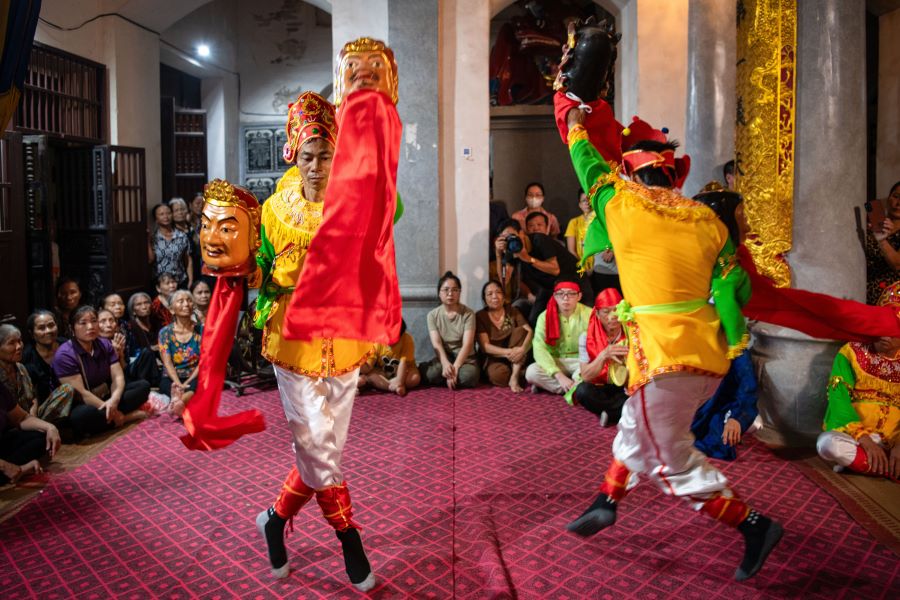 |
| Wooden head puppetry is an ancient folk art form that comes to life during the annual Dai Bi Pagoda Festival in Nam Giang commune, Nam Truc district, Nam Dinh province. Held from the 20th to the 22nd of the first lunar month, the festival honors a unique cultural tradition. |
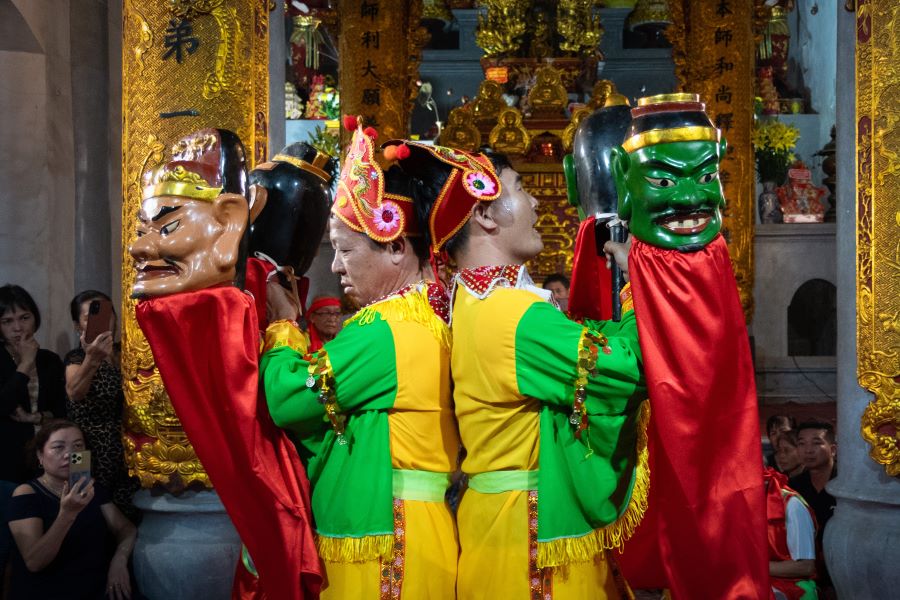 |
| Folk artists perform a captivating dance with 12 wooden head statues, accompanied by traditional percussion rhythms. This performance honors Zen Master Tu Dao Hanh, revered as the father of water puppetry in Vietnam. |
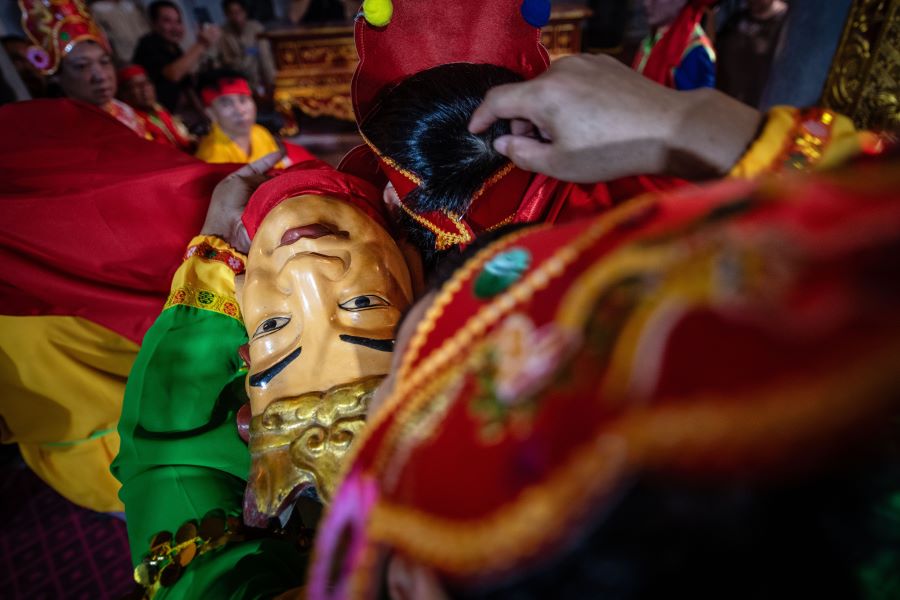 |
| Legend has it that 12 wave gods once brought flooding and harm to the land. Zen Master Tu Dao Hanh used his magic to subdue six of these gods and drove the other six out to sea, protecting the people. |
.jpg) |
| Ever since, puppet shows have been an annual tradition, entertaining both the Zen Master and the local community, becoming an integral part of their cultural heritage. |
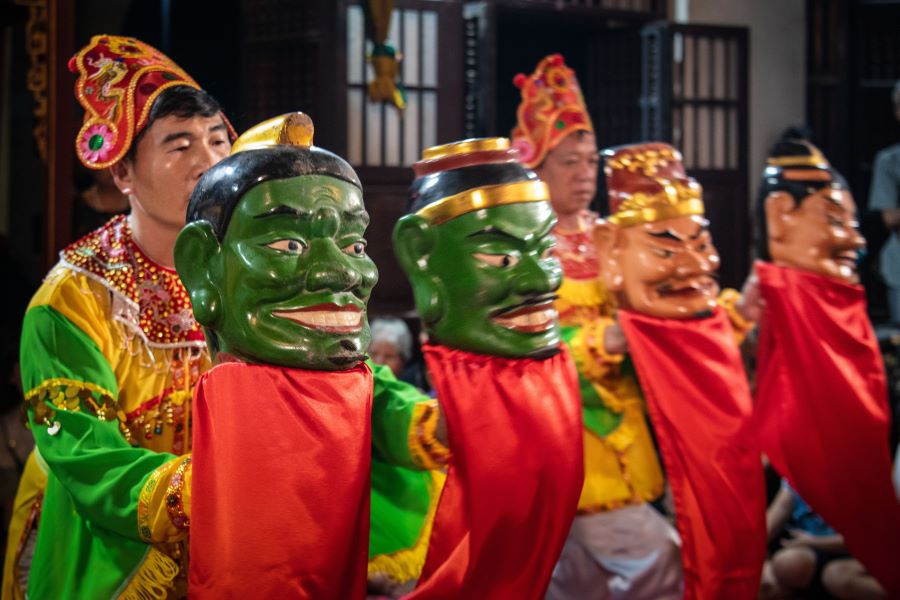 |
| The wooden statues come in different face colors, each symbolizing a unique aspect. White represents mandarins and wise men, green with wide mouths and large noses symbolize fertility and growth, and pale yellow represents the wet rice culture. |
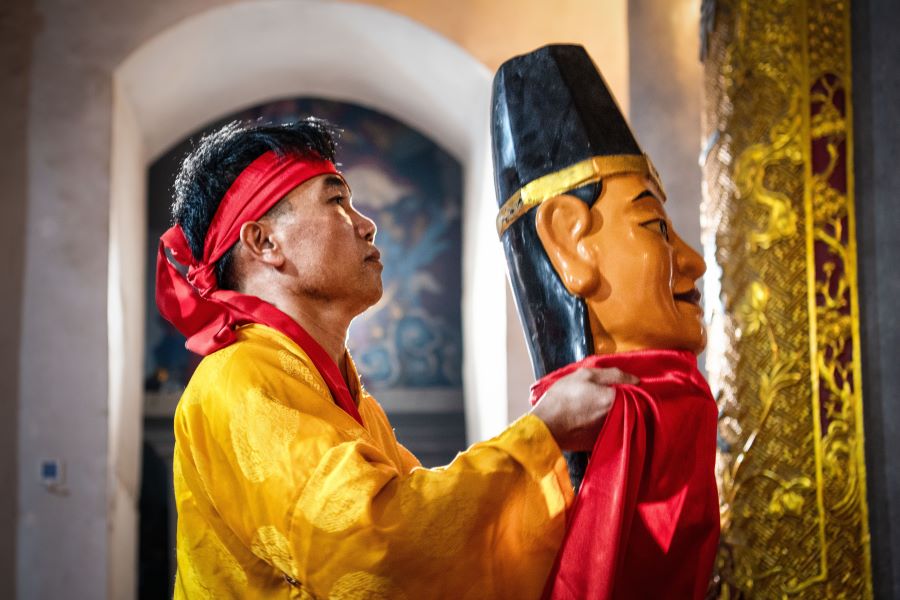 |
| Wooden head puppetry is more than just a performance; it reflects the spiritual culture of the wet rice civilization of the northern delta, connecting the community to its rich heritage. |
Ancient house in Ma May
NDO – Ma May, a rare quarter that still retains several old houses, has created one of the characteristics of Hanoi. Hanoi’s streets are becoming increasingly crowded and traditional features can sometimes be hidden behind modern life. But if one takes the time to relax and look around, the ancient features begin to reveal themselves.








